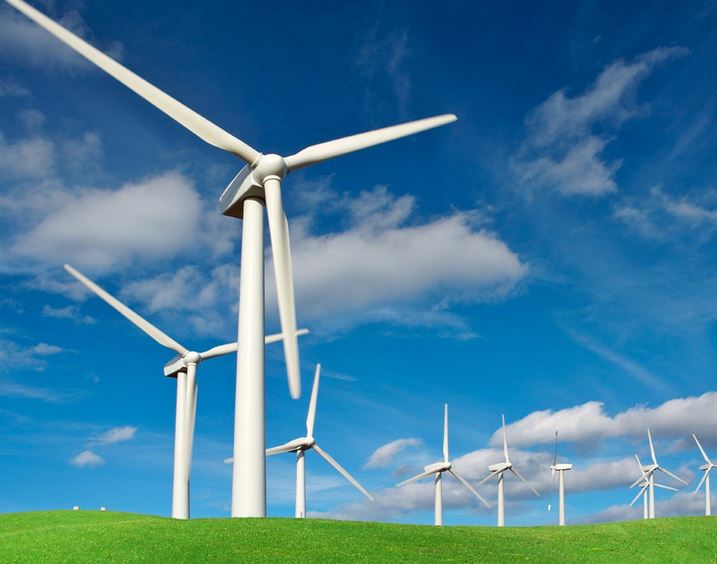The production and consumption of energy is an essential component to a higher standard of living. Rapid phases of industrialization in countries around the world have given rise to the use of non-renewable fossil fuels. Non-renewable fossil fuels are a part of the many traditional energy production and consumption methods. Renewable power sources are gaining recognition due to their sustainability. Renewable power sources are a part of the many sustainable energy production and consumption methods. Both traditional and sustainable methods of energy production and consumption have associated economic, environmental, political, and social advantages and disadvantages as well as respective resource management viewpoints.
Traditional methods of energy production and use have many economic, environmental, political, and social advantages and disadvantages as well as an associated resource management point of view. Traditional methods of energy production and use include non-renewable energy sources such coal, oil, and natural gas. Coal, a black hard rock mineral comprised of 60-90% carbon, is a traditional method of energy consumption. Coal as an energy source is produced through the process of mining and combusting. Coal burning is politically advantageous because it is an abundant, inexpensive, and easy to burn energy source that can enable governments to supply power to communities. However, the burning of coal generates air pollution that is harmful to people because it can lead to respiratory problems. Mountaintop mining used to extract coal involves the demolition of the tops of mountains with powerful explosives. This method of coal mining is harmful to the environment because it causes the plants and animals that inhabit the region to perish. Furthermore, the production and consumption of oil has progressed it to be the leading traditional energy source since the 1950’s
Oil also referred to as petroleum, is a yellow-to-black liquid derived from ancient plant and animal fossils that have undergone high temperature and heat conditions. Oil is often drilled in combination with natural gas from large dome-shaped formations called anticline folds. Oil drilling operations can lead to harmful effects on the environment due to the risk of oil spills. For example, the Exxon Valdez oil spill in March 24, 1989 spilled close to 50 million liters of oil into the Gulf of Alaska causing much harm to marine life. Accordingly, to prevent environmental damage caused by oil spills, governments such as the Province of British Columbia (B.C.) have imposed moratoriums on oil exploration. Conversely, the provincial government of B.C. and federal government of Canada have taken into account the political advantages that can stem from lifting the moratorium on oil exploration. For example, oil exploration in the coastal waters of British Columbia can generate revenues for government and reduce dependence on foreign countries. Moreover, natural gas is a traditional, non-renewable method of energy production and consumption.
Natural gas is a fossil fuel derived from ancient buried organic material that required greater subjection to extreme pressure and heat than other types of fossil fuels. The production of natural gas is similar to the production of oil and involves extraction and transportation methods such as drilled wells, pipelines, and tankers. Natural gas is more environmentally friendly than other types of fossil fuels because it is cleaner-burning. The consumption of natural gas provides social advantages to people through the powering of homes for applications such as stoves, heating, and washing machines.
Considering the aforementioned information, it can be observed the major resource management view associated with the use of traditional energy production and consumption methods put emphasis on utilizing the power capacity of geological material such as fossil fuels to improve the standard of living. In conclusion, while most traditional methods of energy production and consumption are non-renewable, the economic, political, and social advantages appear to outweigh the environmental disadvantages which are a contributing factor for their continued use.
New energy production and consumption methods that can be used to increase sustainability have an array of economic, environmental, political, and social advantages and disadvantages as well as an associated resource management viewpoint. New energy production and use methods that increase sustainability include improvements in traditional methods, solar power, wind power, nuclear power, and hydrogen power. Improvements in traditional methods include technologies that increase sustainability of less environmentally friendly, non-renewable fuels. For example, electrostatic precipitators can be installed in coal-fired power manufacturing plants to remove toxic fly ash through electrical charges that connect them to collector plates for later disposal.
Another sustainable method of energy production and use is solar power. Solar power is the harnessing and conversion of sunlight into electricity. Solar power can be used in ways including passive solar heating and solar panels. Passive solar heating is a method of design which insulates buildings. For example, in the northern hemisphere buildings with a southern aspect can allow the heat of the sun to enter through large windows. Solar panels use photovoltaic solar cell systems to convert the sun’s energy into electricity. Solar panels are commonly installed in individual applications such as generating power for single buildings. Designing and building solar power systems is politically disadvantageous because it is expensive and therefore governments are less willing to subsidize the solar energy industry. Moreover, wind power although was used hundreds of years ago, is one of the fastest growing renewable energy sources today.
Wind power involves the use of wind turbines equipped with generators that convert wind energy into electrical power. Wind power provides many environmental benefits such as elimination of greenhouse gas production, non-contribution to acid rain, and minimal habitat destruction because the windiest areas generally have the least vegetation. An economical disadvantage of wind power is the high initial cost of building wind turbines. On the contrary, the long-term costs of generating wind electricity are expected to very cheap as more wind farms are developed.
A social disadvantage of wind power is that it may not be a viable way of generating electricity for communities because windy conditions may not exist when power is needed. Hence, communities could experience electricity blackouts which require the need to combine wind power with more reliable methods of energy production. Furthermore, hydrogen has also been recognized for its use as a sustainable power source because it is pollution free and the most abundant element on earth. Hydrogen can be used as a power source by isolating hydrogen atoms in a process called electrolysis.
Electrolysis consists of combining electricity with water to separate the hydrogen and oxygen molecules in water. Hydrogen fuel used in manufactured automobiles provides economic and environmental benefits such as less greenhouse gas emissions and increased fuel savings for drivers who opt for hybrid vehicles as their mode of transportation .
Considering all of the aforementioned methods, it can be understood that the major resource management view of sustainable energy production and consumption puts emphasis on reducing harmful emissions, creating a long-term energy plan, and improving the economics of renewable power sources. In conclusion, while many methods of energy production and consumption which improve sustainability exist, the need for greater economic and political advantages has been a contributing factor to the prevention of their use as a mainstream power source.
To summarize, both traditional and sustainable methods of energy production and consumption have merit to their resource management views and economic, environmental, political, and social benefits. As the energy industry aims to find a balance between economics and sustainability, the evaluation of all affected variables is required. While renewable energy has existed for centuries, the rapid industrialization of countries worldwide has shifted the focus on the utilization of cheap and easy to produce fossil fuels. Many of the energy methods are interconnected with each other and developing or improving existing technologies will increase overall sustainability.







